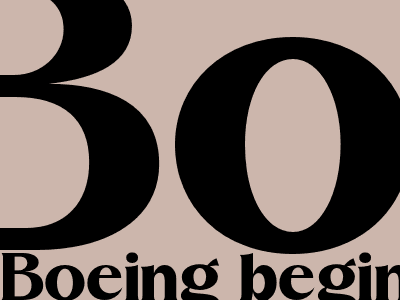
Boeing Begins Mass Layoffs, Cutting 10% of Workforce
Introduction
In a move to reduce costs and streamline operations amid the ongoing aviation industry downturn, Boeing has commenced issuing layoff notices to 10% of its workforce, affecting approximately 15,000 employees.
The layoffs, which will primarily impact commercial airplane programs, are part of a broader restructuring plan announced by Boeing in July 2020. The company cited the prolonged impact of the COVID-19 pandemic on air travel and aircraft demand as key factors driving the decision.
Impact on Commercial Airplane Programs
The layoffs will disproportionately affect Boeing's commercial airplane programs, with the 737, 747, and 787 assembly lines seeing significant reductions. The 777X program, which had already faced production delays, will also be impacted.
The company is reducing production rates for the 787 and 737 MAX aircraft, which have been particularly hard hit by the pandemic-induced decline in air travel. As a result, the Everett, Washington, facility where the 787 is assembled will see a significant number of layoffs.
Financial Impact and Long-Term Implications
Boeing estimates that the layoffs will result in annual cost savings of approximately $2.5 billion. The move is part of a larger strategy to reduce the company's operating expenses by $10 billion over the next two years.
However, the layoffs are expected to have a significant impact on Boeing's workforce and the communities where it operates. The company has stated that it will provide severance packages and support services to affected employees.
The long-term implications of the layoffs remain uncertain. Boeing's ability to regain market share and adapt to the post-pandemic aviation landscape will depend on factors such as the recovery of air travel demand and the success of its new aircraft programs.
Government Support and Industry Outlook
Boeing has received financial assistance from the U.S. government to weather the pandemic, including a $17 billion loan from the Treasury Department. The company has also reduced its capital spending and suspended share buybacks.
The aviation industry is expected to face continued challenges in the coming months as the pandemic continues to disrupt air travel. However, there are signs of recovery, with vaccine rollouts and the easing of travel restrictions gradually increasing passenger demand.
Conclusion
Boeing's layoffs are a stark reminder of the severe impact that the COVID-19 pandemic has had on the aviation industry. The company's decision to reduce its workforce by 10% is a necessary but painful step as it seeks to adapt to a rapidly changing market.
The long-term consequences of these layoffs remain uncertain. Boeing's ability to navigate the challenges ahead and emerge as a stronger company will depend on factors such as the recovery of air travel demand, the success of its new aircraft programs, and the support of its government and industry partners.